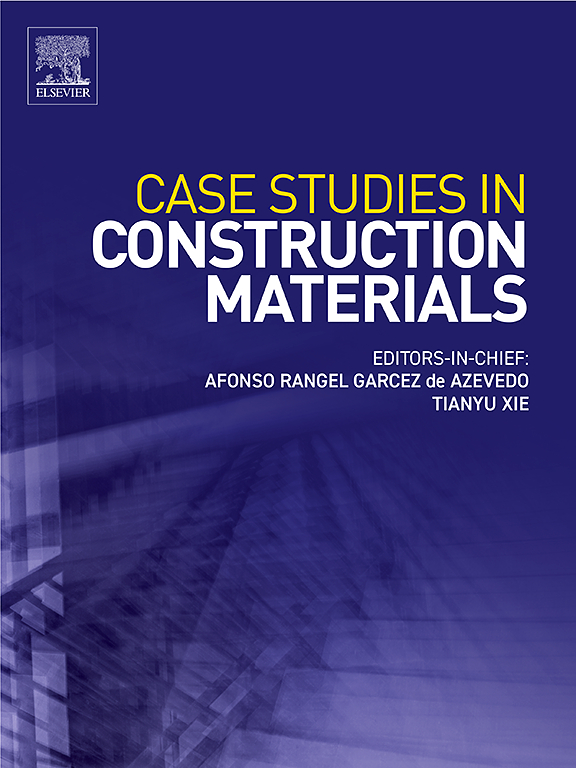Studies on the mechanical properties of interlayer interlocking 3D printed concrete based on a novel nozzle
IF 6.5
2区 工程技术
Q1 CONSTRUCTION & BUILDING TECHNOLOGY
引用次数: 0
Abstract
The interlocking can effectively improve the mechanical properties of concrete. However, the strength of 3D printed concrete with interlocking interfaces, fabricated using non-automated methods, is reduced due to the time-consuming interface processing. Additionally, studies on the effects of interlocking on the mechanical properties, failure modes, and anisotropic behavior of 3D printed concrete are not yet systematic. In order to address these issues, a printing forming scheme and nozzles were designed for interlayer interlocking 3D printing, and the mechanical properties of interlayer interlocking 3D printed concrete were tested. Firstly, the forming scheme and nozzles are specifically designed for the preparation of 3D printed concrete with interlocking interfaces between the layers. Furthermore, extrudability tests are carried out to determine the appropriate printing parameters for interlayer interlocking 3D printed concrete. Finally, specimens were printed, and interfacial splitting tests, interlayer interfacial shear tests, and compression tests were conducted. The results reveal that: (1) by utilizing the appropriate extrusion rate of the rotating shaft and nozzle travel speed, better-formed interlayer interlocking concrete filaments can be obtained. (2) the interlayer interlocking 3D printed specimens exhibit higher strength. The interfacial splitting tensile strength is increased by about 14.5–30.7 %, and the interlayer interfacial shear strength is increased by about 7.8–18.0 % compared to those with smooth interlayer interfaces. (3) the interlayer interlocking 3D printed concrete exhibits a reduction in the anisotropic coefficient of about 13.7–25.5 %, and the anisotropy is significantly weakened.
基于新型喷嘴的层间联锁3D打印混凝土力学性能研究
联锁可以有效地改善混凝土的力学性能。然而,使用非自动化方法制造的具有互锁界面的3D打印混凝土的强度由于界面处理耗时而降低。此外,联锁对3D打印混凝土力学性能、破坏模式和各向异性行为的影响研究尚不系统。针对这些问题,设计了层间联锁3D打印的打印成型方案和喷嘴,并对层间联锁3D打印混凝土的力学性能进行了测试。首先,为制备具有层间联锁界面的3D打印混凝土,专门设计了成型方案和喷嘴。此外,还进行了挤压性能试验,以确定层间联锁3D打印混凝土的合适打印参数。最后打印试样,进行界面劈裂试验、层间界面剪切试验和压缩试验。结果表明:(1)利用适当的旋转轴挤压速率和喷嘴行程速度,可以获得较好的层间联锁混凝土细丝。(2)层间联锁3D打印试件具有更高的强度。界面劈裂抗拉强度比光滑界面提高约14.5 ~ 30.7 %,层间界面抗剪强度提高约7.8 ~ 18.0 %。(3)层间联锁3D打印混凝土各向异性系数降低约13.7 ~ 25.5 %,各向异性明显减弱。
本文章由计算机程序翻译,如有差异,请以英文原文为准。
求助全文
约1分钟内获得全文
求助全文
来源期刊

Case Studies in Construction Materials
Multiple-
CiteScore
7.60
自引率
19.40%
发文量
842
审稿时长
63 days
期刊介绍:
Case Studies in Construction Materials provides a forum for the rapid publication of short, structured Case Studies on construction materials. In addition, the journal also publishes related Short Communications, Full length research article and Comprehensive review papers (by invitation).
The journal will provide an essential compendium of case studies for practicing engineers, designers, researchers and other practitioners who are interested in all aspects construction materials. The journal will publish new and novel case studies, but will also provide a forum for the publication of high quality descriptions of classic construction material problems and solutions.
 求助内容:
求助内容: 应助结果提醒方式:
应助结果提醒方式:


